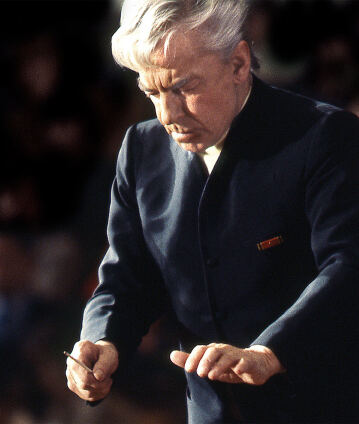Karajan conducts Brahms’s “German Requiem” in Salzburg

We now show a live recording of Brahms’s Deutsches Requiem from the 1978 Salzburg Festival with Herbert von Karajan conducting and Gundula Janowitz and José van Dam as the soloists. Brahms’s Requiem is a work full of consolation and warmth, which Karajan conducts with a full sound and generous breath. In addition to the Berliner Philharmoniker, the performers include the Wiener Singverein which was once conducted by Brahms himself.
Herbert von Karajan first conducted the German Requiem in Aachen in 1936, having originally studied the work as a young boy with his harmony teacher, Salzburg Cathedral organist Franz Sauer. In 1937, the great German baritone Hans Hotter sang the Requiem with Karajan and the Aachen choir and orchestra in Brussels. Karajan was something of a firebrand at the time, yet Hotter recalled: “The thing I remember was the absolute control he had over his emotional behaviour. He was only 29 yet he conducted one of the most moving performances I have come across in my whole life.”
After the Second World War, Karajan worked more or less exclusively with the Wiener Singverein, the choir of which Brahms himself had been concert director in 1872–75. It was a relationship which had been cemented with a recording of the German Requiem made in Vienna in 1947, the first complete set to be made for the gramophone and one which remains unique, not least because of the feeling it preserves of a true requiem: It is a desperate cry from the abyss in the face of a destroyed city and at the same time promises consolation.
Begun shortly after the death of Brahms’s mother in 1865, the German Requiem was originally in six movements. He later added a seventh, the exquisite soprano aria “Ihr habt nun Traurigkeit”. As Elisabeth Schwarzkopf the soloist on Karajan’s 1947 Vienna recording explained, it is an exceptionally difficult aria to sing, “the vocal line is so high, the emotion so deep”. When Karajan re-recorded the work for Deutsche Grammophon with the Wiener Singverein and the Berliner Philharmoniker in Vienna in 1964, the 26-year-old Gundula Janowitz was his chosen soloist, as she would remain until this, her last performance with him, at the 1978 Salzburg Easter Festival.
© 1978 Unitel
Category
Artists
Our recommendations
- Karajan conducts Bach
- Karajan conducts Beethoven’s “Missa solemnis” in Salzburg
- Mozart’s “Magic Flute” from Baden-Baden
- Zubin Mehta conducts Mozart, Schumann and Tchaikovsky in Évian
- Daniel Barenboim conducts the Berliner Philharmoniker at the Staatsoper Unter den Linden
- The 2009 Europakonzert in Naples with Riccardo Muti